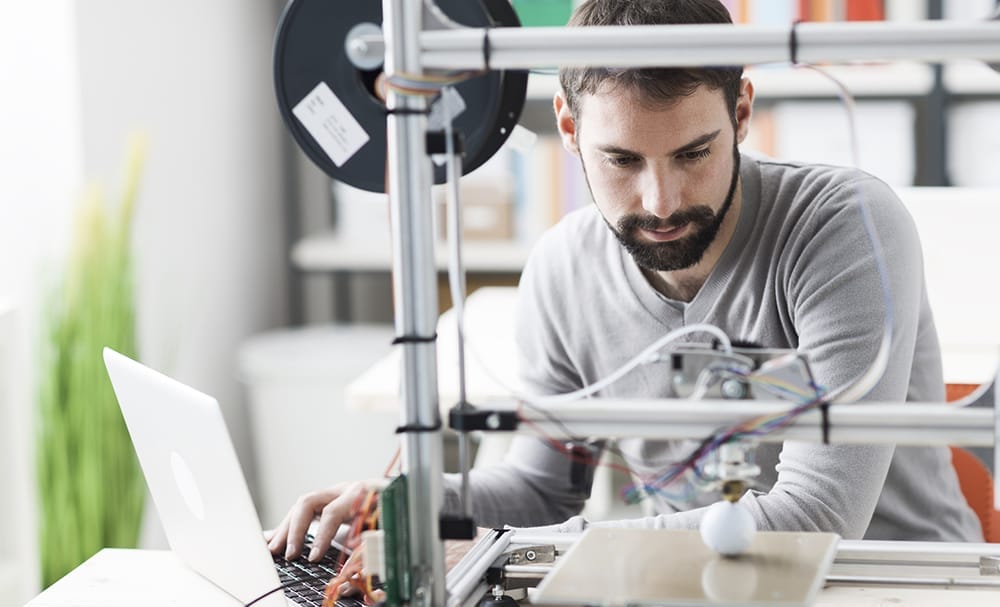3D printing: the dawn of agile R&D
This year Sagentia is celebrating its 30th anniversary. To mark the occasion the team takes a look at some of the key trends in the last three decades and how these breakthroughs in science and technology have impacted the way we live and work today.
Third in our series, this article takes a look at the evolution of 3D printing and its role in accelerating product development and bringing new products to market. It explores what difference the technology has already made to development processes in industrial, medical and consumer markets and goes on to look at the potential for bridging the gap to rapid production.
From mold to manufacture
3D printing makes it possible to produce complex objects directly from three-dimensional digital models. Instead of forming a component or prototype by cutting away a solid block of material (such as in subtractive techniques like machining), 3D printing works by stacking two-dimensional cross sections in successive layers to build the final object. This process gives 3D printing its other name – that of additive manufacturing.
3D printing first became part of the product development process when the first devices became available, three decades ago. It was used to rapidly build in resin and later, in the late 1990s, using polymers and metal alloys. The arrival of 3D printing coincided with the interest shown in Japanese manufacturing techniques which helped to bring new innovations to market quicker through ‘lean’ and ‘Just in Time’ techniques. At the time, 3D printed prototypes had limited value due to their poor accuracy and low strength which limited them to non-functional testing.

More recently rapid prototyping techniques have been used to create shapes that would be virtually impossible, at reasonable cost, to produce using standard subtractive techniques. For example, the complex fuel injection parts that aerospace companies create and incorporate as products.
Three decades later, final molds, end-use parts, and components as well as finished products can be 3D printed in hundreds of materials. A range of technologies and materials are widely used today.
